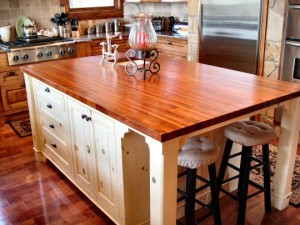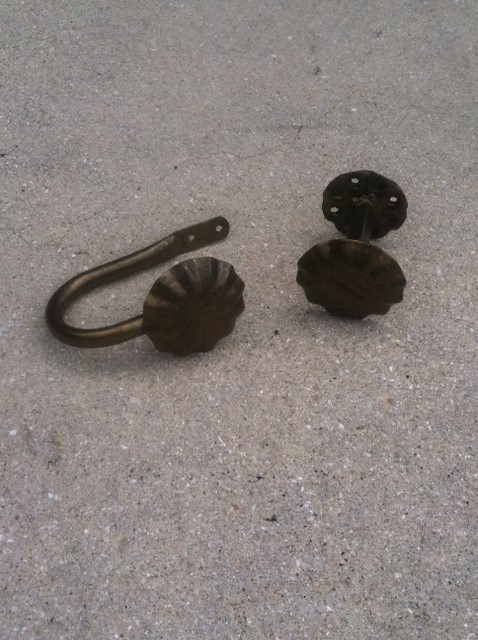Metropolis Iron Releases New Line of Ruffled Drapery Medallions
Iron Home Décor Designer, Metropolis Iron, has released a new line of ruffled drapery medallions. These new medallions offer designers a drapery hardware option which

Are you thinking about renovating your kitchen? Doing research on countertop materials? If so, then The Metropolis Iron Countertop Spotlight series will help you. Today we look at the beautiful warmth of butcher block countertops.
Material: Wood or Butcher Block
Styles: Edge grain butcher block tops have parallel wood rails that run the length of the piece. End grain butcher block tops are created by fusing together the end pieces of wood rails into a checkerboard pattern. End grain is considered the stronger and more durable style of the two.
Common Woods Used: Hardwoods like walnut, oak, maple, cherry, zebrawood, wenge, bamboo, or a mix of 3+ of these woods together.
Finish types: Drying oils (linseed, tung, diluted varnish); Nondrying oils (vegetable and mineral oils); paraffin or beeswax.
Environmental Impact: Mild to moderate, depending on the type of wood and whether or not it comes from salvaged or reclaimed sources or sustainably managed forests.
Pros: Warm look and feel; naturally anti-bacterial; strong and durable; biodegradable; affordable, particularly compared to granite or quartz countertops.
Cons: Requires bi-annual sanding and oiling to protect the wood; sealed counters should not be cut on.
Support Needed: Wood countertops tend to be heavy and bulky requiring a stronger iron or metal corbel.
Care: Maintenance depends on the type of finish you have. In general, wipe clean with damp cloth and mild soap. Avoid harsh detergents, chemicals, and puddles of standing water. Sand out light scratches, dents and dings with a high grit sandpaper. Recondition or oil when wood gets dull or shows signs of cracking or aging, this protects the wood and helps guard against germs and mold.
Installation: Make sure the butcher block countertop has adequate ventilation as wood can expand and contract with temperature changes.
Cost: Pre-assembled or pre-fabricated sections start around $60.
Iron Home Décor Designer, Metropolis Iron, has released a new line of ruffled drapery medallions. These new medallions offer designers a drapery hardware option which
As the name suggests, holdbacks decoratively hold curtains back to let the light in, giving you a light-filled, elegant look for your room. Installing curtain

Curtain holdbacks are an important feature of any complete window treatment design. A good curtain tie back should not only be functional as to tie
If you aren’t very skilled in the world of drapery hardware vocabulary, creating the perfect window treatment can be a difficult task. Knowing what the item is
When it comes to decorating, choosing curtains can be an exciting way to add a personal touch to the rooms in your home. But, what
We’re known for our exceptional customer service and we would be happy to help!

